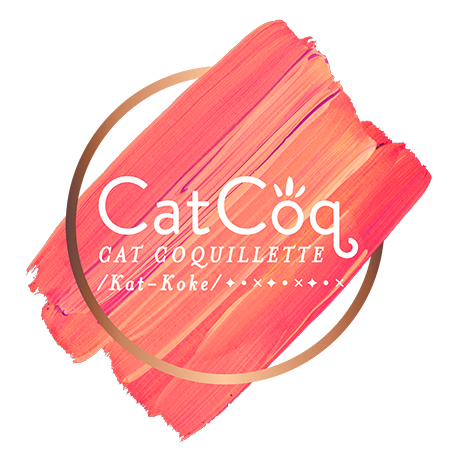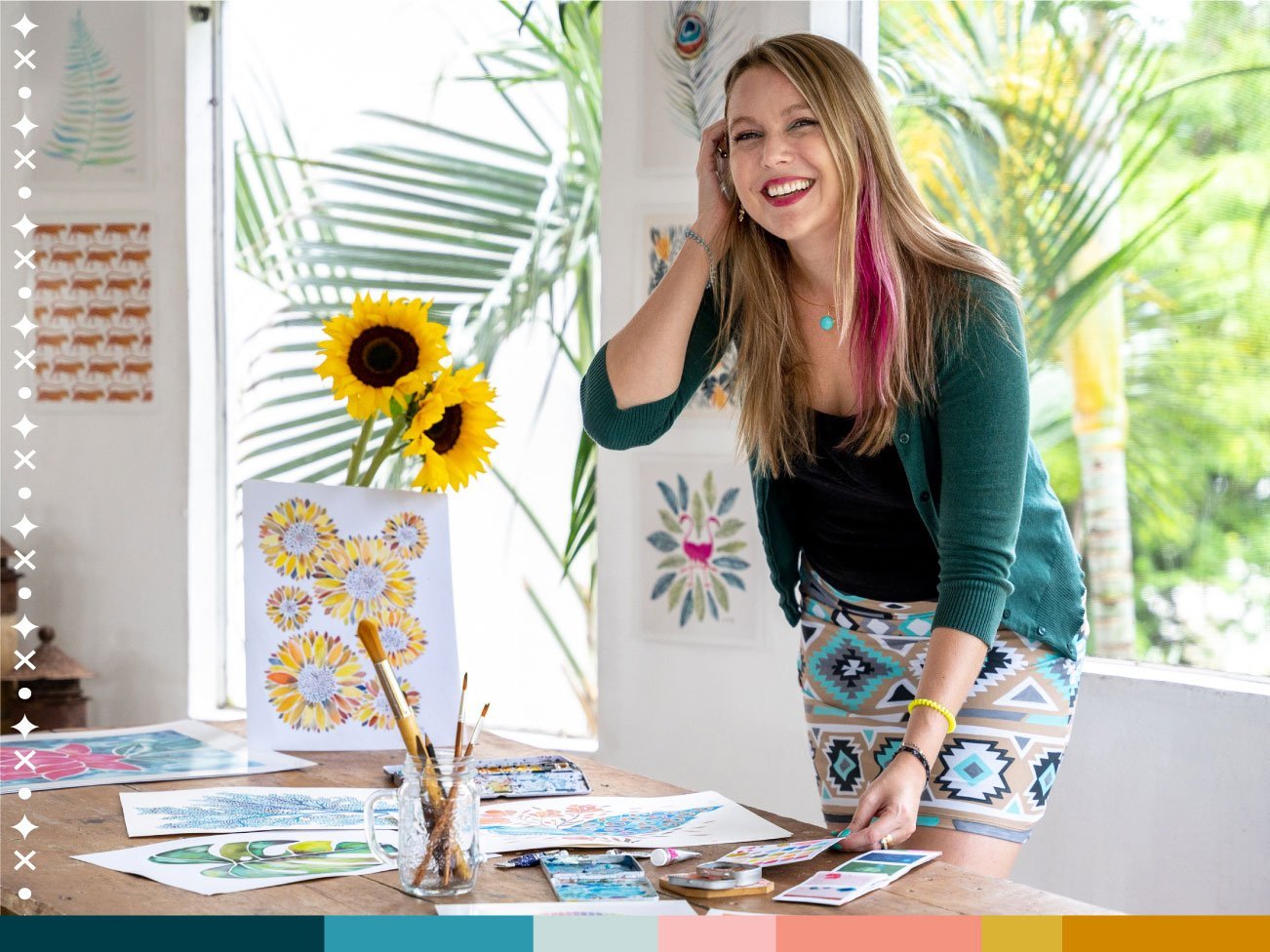The Ethical Use of AI for Artists and Creative Entrepreneurs
Is there any ethical way to use AI as an artist? Let’s talk about it. First of all, please know that I acknowledge the concerns surrounding AI-generated designs. I know that this is a triggering topic for many creatives, and I think there is a lot of nuance to the issue. That is why I advocate for the ethical use of this technology to streamline the artistic process. I don’t believe AI will ever be able to replace true artistry, but it can be a helpful tool for artists.
AI is advancing so rapidly that regulation hasn’t really caught up. This is why there’s such a gray area about what’s right when it comes to the use of AI. I’m not an expert on this topic, but I will share my personal experience as an artist and how I’ve navigated the ethics around AI generated words and images.
And before we dive in, let me start by saying that I do not condone the use of AI generated art in your professional portfolio or trying to pass it off as your own. However, there are a few ways I’ve found AI to be useful. I’ll share how I use this technology, and I’ll also touch on the big no-no’s when it comes to AI.
The Big Concerns With AI
Why is AI such a polarizing topic? Simply put, the AI models have been trained on millions of sources like articles and images without express permission from the creators. In the early days of AI images, we were even seeing artist’s signatures showing up in these AI-generated artworks.
As a professional artist with my art all over the internet and on products worldwide, this was definitely a red flag for me.
That said, technological advances are happening more and more rapidly these days. In some cases, if you don’t explore new technology from the get-go, you can get left behind. For example, when digital art tools like Photoshop came on the scene, lots of creatives were really threatened and upset by it.
People thought it would take over or become a crutch for artists. But it turns out, it did the opposite. It offered even more opportunities for creatives and is now a key tool for many of us. With that in mind, I decided to explore how I could use AI ethically as an artist.
How I Use AI As an Artist
How I Use Written AI
First, let’s talk about AI as a business tool. AI tools like ChatGPT are great for helping me in the parts of my business that aren’t my strongest. I’m great at designing beautiful illustrations, but I feel a little less comfortable when it comes to writing. For example, when I write Instagram captions, it can be a struggle for me to turn my analytical and dry writing style into a more casual format for social media. I use ChatGPT to help take the idea or caption I’ve already written and massage the style to be more friendly and conversational.
It’s also a great tool for brainstorming! A few years ago, I had a new drawing class coming out called Blooms & Shrooms: Draw Fun & Funky Art in Procreate. It was all about drawing flowers and mushrooms in Procreate and I loved the catchy title. But when I was writing the class description, I realized the tone of my writing style didn’t match the playful and quirky class title.
I pasted the description I’d written into ChatGPT and prompted the AI to rewrite my copy in a more playful style and to add some puns related to mushrooms and flowers. Most of the puns were pretty cringy, but there were a few gems in there, so I was able to use a combination of my original copy and mix it with some of the new lines that ChatGPT generated for me. The final result was a class description that accurately represented both the value of my class and the playful vibe I was hoping to convey.
My two cents on using written AI is to use it as a tool rather than expecting it to write everything for you. When it comes to writing a full blog post, social media caption, or website page, ChatGPT can tend to sound a little robotic. Use it to elevate your own thoughts and your own words, and you’ll be golden!
How I Use Visual AI
Visual AI is where things start to get a little more complicated for artists. However, I do sometimes use AI image-generation as a step in my creative workflow process.
Artists have always used reference images for inspiration. Whether you’re studying how to get a pose drawn just right, or need to understand the correct proportions of an object, we all rely on references to help us draw. (Anyone who tells you otherwise either has decades upon decades of experience or is lying to you!)
As technology has advanced over the years, we’ve been continually introduced to new tools that are designed to help with the process of gathering inspiration and using references. Way back in the day, that involved live models or painting on location. Today, we have incredible tools like Pinterest, Unsplash, sites like Public Work, and even just our phone cameras to help us gather reference material.
New artists also find their own unique style by taking inspiration from artists they admire. At the beginning of their creative journey, their work can tend to look similar to these artists, but as they continue to create and find their own way, their true artistic voice starts to shine through.
The point is, every artist draws inspiration from countless sources in order to create the beautiful and unique work that you see as the final product. But the key with referencing other artists or photos is to not copy them directly. You always want to bring your own artistic voice and style to your final work no matter what you use as a reference.
So how does AI play a role in this? AI Image generation can be a great tool for visual brainstorming. Notice how I didn’t say that it can be a great tool for copying. Rather, it should be used in the idea generation process. Just like inspiration tools like Pinterest, you can use AI to gather inspiration and ideas, but it’s important to not copy them directly.
For years, my go-to technique for gathering reference images is to study a bunch of different photos of the motifs I want to paint, and use those different images to “Frankenstein” together a unique composition. For example, I’d find half a dozen photos of a leopard, cut them apart, and piece bits of different leopards together to create my own unique leopard as reference while I worked on a new painting. But that process of blending different reference photos together to create unique compositions takes hours and can be pretty tedious depending on the complexity of your vision.
AI can generate references in seconds. Compared to my manual method of cutting and pasting, which takes hours, using AI to generate reference images has become a game-changer for me. This is why I’ve started experimenting with it as a tool to speed up my workflow. I still cut apart the AI-generated images and do a bit of my own “Frankensteining” by piecing different images together, but having very specific AI-generated images as a starting point has massively sped up the process for me.
At the end of the day, it’s important to still come up with your own creative vision without relying on AI. After all, as artists, our creativity is our super power.
References have always played a pivotal role in illustrations and design, and I believe that as long as AI-generated art is used solely as a reference or to kickstart your process, you’re still upholding ethical boundaries.
The Big Don’ts
This leads me to the three big “don’ts” when it comes to using AI.
#1 - Don’t use AI-Generated Images in Your Professional Portfolio
If you are a professional artist or aspiring professional, you want to make sure that your portfolio is filled with original art. If you’re presenting your portfolio to a potential client or art licensee, they’ll want to know that all of your work is original. If you include AI pieces, it could potentially be a red flag that could cost you new opportunities in your career.
#2 - Don’t Trace AI Images Directly and Call it Your Reference
Just like you wouldn’t copy a VanGogh painting and put it in your portfolio, you don’t want to copy directly from your AI reference. You can use it as inspiration, but make sure that your final piece is always an original composition in your own style. Your own unique artistic voice is one of the most valuable assets you have as an artist.
#3 - Don’t Sell AI Generated Art
There are lots of online marketplaces that make it super easy to upload and sell your work on products. Whether that’s through print on demand sites like Society6 or Spoonflower or through platforms like Etsy, there is more opportunity than ever for artists to sell their designs. However, I don’t believe it’s ethical to generate a design using AI and then pass it off as your own.
When in doubt, think about how you would treat an image from Pinterest. You can use it as a loose reference, but you never want to copy it directly. The only images that are truly above-board to copy directly are reference photos you took or designed yourself. And no matter what, you want to make sure to stay true to your own artist voice.
Want to learn more about my process of finding references and using them in my final work? Check out this blog post next!








